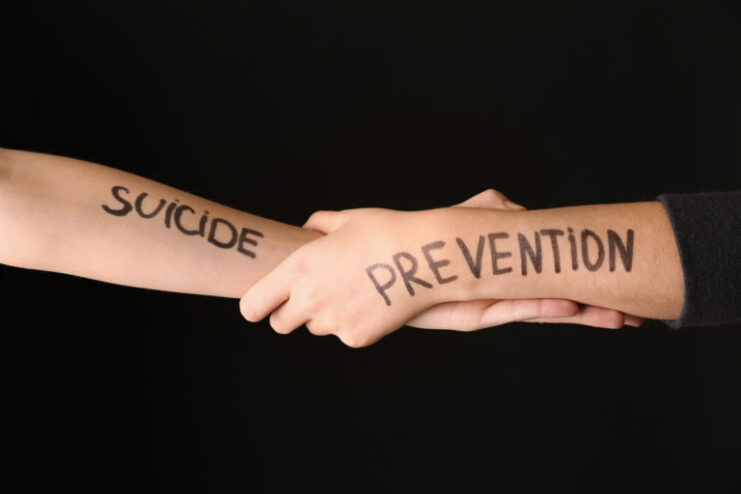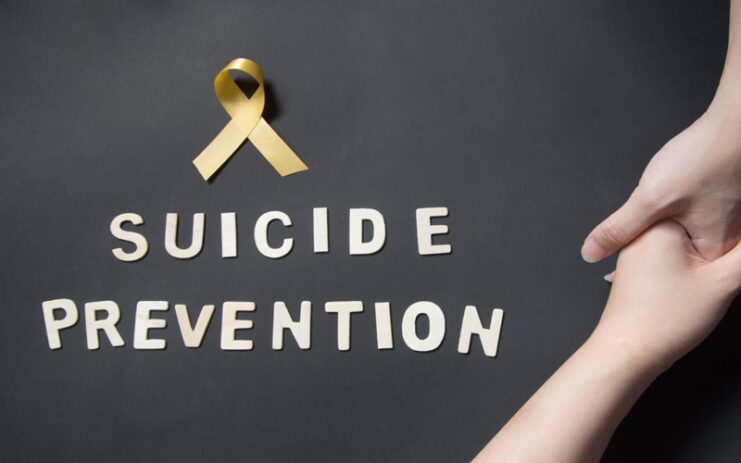If you or someone you know is having suicidal feelings or thoughts, help is available through the Suicide Prevention Lifeline at 1-800-273-8255 or via chat on the Suicide Prevention Lifeline website, suicidepreventionlifeline.org. This Lifeline is available 24/7 and completely confidential.
Suicide is the 10th leading cause of death in the U.S. for all ages, according to The American Foundation for Suicide Prevention. This means approximately 123 Americans die by suicide every day.
Many do not seek help from others due to the stigma surrounding mental health and suicide. Therefore, “being in the know” is vital to helping those around you and encouraging them to pursue the proper resources.
But that begs the question, how can one know when there is concern or when to take action?
Know the warning signs
Being able to identify the warning signs may help you determine if a loved one is at risk. These warning signs can be verbal and/or behavioral.
Some examples include:
- Talking about wanting to die or to kill themselves
- Looking for a way to kill themselves, such as searching online or buying a gun
- Talking about feeling hopeless or having no reason to live
- Talking about feeling trapped or in unbearable pain
- Talking about being a burden to others
- Increasing their use of alcohol or drugs
- Acting anxious or agitated; behaving recklessly
- Sleeping too little or too much
- Withdrawing or isolating themselves
- Showing rage or talking about seeking revenge
- Displaying extreme mood swings
Be aware of the risk factors
Risk factors are mental, societal or historical characteristics that make it more likely someone will consider and/or attempt suicide. While it is difficult to predict suicide with certainty, these factors are extremely important to be aware of.
Some examples include:
- Mental disorders, particularly mood disorders, schizophrenia, anxiety disorders and certain personality disorders
- Alcohol and other substance use disorders
- Impulsive and/or aggressive tendencies
- History of trauma or abuse
- Major physical illnesses
- Family history of suicide or previous suicide attempts

- Job or financial loss
- Loss of relationship or lack of social support and sense of isolation
- Easy access to lethal means
- Lack of health care, especially mental health and substance abuse treatment
- Cultural and religious beliefs, such as the belief that suicide is a noble resolution of a personal dilemma
- Exposure to others who have died by suicide (in real life or via the media and Internet)
Understanding the issues concerning suicide and mental health is important in order to take part in suicide prevention and save lives. So, how can you help someone you love who is experiencing suicidal thoughts?
5 Action Steps in Suicide Prevention:
Start the Conversation. It is as simple as asking direct questions, “Are you thinking about suicide?”, “How can I help?” and “How do you hurt?” These all show you are open to having the conversation and most importantly, in a non-judgmental way. An open-dialogue will allow everyone involved to decide the necessary steps to be taken.
Be there. Make sure you are actively listening and taking their answers seriously. It is critical to never promise to keep their answers a secret as the main goal is to seek the help needed. Help them focus on their reasons for living. Being physically present for someone or even speaking to them on the phone is also important. By increasing one’s connectedness, you are limiting their feelings of isolation and giving them a sense of belonging. Both have shown to be a protective factor against suicide.
Help Them Connect. Connect them to immediate counseling and ongoing support groups if needed. Local crisis centers provide invaluable support during critical times. Here are a few great resources to locate a therapist/support group based on your location.

Keep Them Safe. Reducing access to lethal weapons such as firearms, medications, and other means of self-harm is a crucial factor in prevention. Also, help your loved one develop a safety plan to act as the safety net when they start to experience significant suicidal thoughts. Here is a great example of a safety plan developed by Barbara Stanley of Columbia University and Gregory K. Brown of University of Pennsylvania.
Promote Awareness. Visible support is one way to raise awareness for suicide prevention and stand up for those who are at risk or are suicide survivors. Donning suicide awareness accessories or awareness ribbons can be a great way to fight the stigma and let someone know you care.
If you are feeling thoughts of suicide yourself, remember that you matter. You are loved. You are needed. And most importantly, you are not alone and help is available.
If you or someone you know is having suicidal feelings or thoughts, help is available through the Suicide Prevention Lifeline at 1-800-273-8255 or via chat on the Suicide Prevention Lifeline website, suicidepreventionlifeline.org. This Lifeline is available 24/7 and completely confidential.

